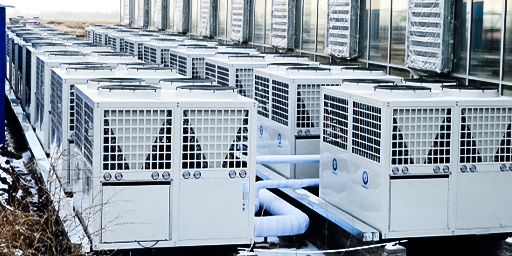Air energy heat pump basic knowledge training
1. Name the Explanation
Air source: heat energy comes from the air; in addition, there are water sources, ground sources, etc.
Air energy: air is not a kind of energy, the form of energy includes electric energy, heat energy, solar energy, and so on.
Heat pump: A device that uses high-level energy to flow heat from a low-level heat source to a high-level heat source
2. Principle of air source heat pump water heater
Heat pump technology is based on the reverse Carnot cycle principle. It is mainly composed of four parts: compressor, condenser, expansion valve, and evaporator;
In this way, the air-energy water heater can continuously absorb the heat in the air, and transfer this part of the heat to the waterside, thereby achieving the purpose of heating hot water.
3. Product Structure Introduction of Air Source Water Heater
Air source heat pump: A device that uses air as a low-level heat source and absorbs heat from it to a high-level heat source. the
Water source heat pump: A device that uses water as a low-level heat source and absorbs heat from it to a high-level heat source. the
Ground source heat pump: The underground pipe is used as a low-level heat source, and heat is absorbed from it to a high-level heat source.
Swimming pool unit: a heat pump unit dedicated to constant temperature heating of the swimming pool.
Air-conditioning heat pump: capable of cooling, heating, and producing domestic hot water devices (triple supply).
Hot and cold water unit: A device that can produce cold water and hot water separately or simultaneously.
Air source-water source heat pump: A device that can absorb heat from air and water alone or simultaneously from air and water to a high-level heat source. the
Classified by heating temperature:
The high-temperature heat pump (above 65°C);
The low-temperature heat pump (below 60°C).
Classified by the heating method:
Direct heating: heat the cold water to the set temperature at one time.
Circulation type: multiple cycles to heat the cold water to the set temperature.
Immersion type: put the heat exchange tube directly in the heat preservation water tank, and heat the cold water to the set temperature.
According to the working temperature:
Ordinary type General working temperature range: -5°C -43°C.
The general working temperature range of low-temperature type: -15℃-40℃ is suitable for the area north of the Yangtze River.
According to the working voltage:
Single phase 220V.
Three-phase 380V.
According to the type of air outlet of the machine:
Top out the wind.
Side (horizontal) out.
According to the refrigerant heating method:
inner coil.
Outer coil.
4. Functions of air source heat pump components
1) Compressor: Its function is to suck in the low-temperature and low-pressure refrigerant vapor from the evaporator, compress it into high-temperature and high-pressure superheated refrigerant vapor and then discharge it to the condenser.
2) Heat exchanger: The evaporator of the air source heat pump water heater basically adopts flat sheet hydrophilic aluminum foil. The low-temperature and low-pressure liquid refrigerant absorb heat and converts to low-temperature and low-pressure steam.
Water condenser: The water is in a turbulent state in the copper tube, which is not easy to scale, has strong antifreeze ability, is not easy to be blocked, has low requirements on water quality, and is cost-effective.
Plate heat exchanger: Water and refrigerant flow at intervals in the sheet, with sufficient contact and high heat exchange efficiency. It is suitable for units with large power. The price is more expensive, the antifreeze ability is poor, the water quality requirement is high, and it is easy to block.
Shell and tube heat exchanger: high heat exchange efficiency, small size, not easy to block, can be used in any unit.
Submerged coil condenser: simple structure, not easy to clean after scaling, long time, poor heat transfer efficiency, poor corrosion resistance of copper tubes, which may cause coil leakage.
Swimming pool titanium tube heat exchanger: composed of titanium tube and PVC plastic shell or stainless steel shell, the maximum temperature is limited below 45°C.
3) Throttling part: Throttling and depressurizing the high-temperature and high-pressure refrigerant liquid coming out of the condenser into a low-temperature and low-pressure liquid, and then discharging it into the evaporator.
Capillary tube: suitable for small heat pump devices with relatively stable condensing pressure and evaporation pressure; it is drawn from a copper tube and the price is low.
Thermal expansion valve: two kinds of internal balance and external balance. The control signal is sensed by the temperature-sensing package to sense the change in the superheat of the working fluid at the outlet of the evaporator and then transmitted to the diaphragm by the temperature-sensing medium. The control accuracy is not high, and the adjustment range is not large due to the limited deformation of the diaphragm.
Electronic expansion valve: It consists of three parts: detection\control\execution.
The electronic expansion valve has good two-way flow performance; it can precisely control the flow of refrigerant; the electronic expansion valve has the ability of intelligent throttling, full opening and closing, and can be adjusted according to the external ambient temperature to make the unit always work in a stable state. status.
4) The function of the four-way valve: it enables the refrigeration system to switch freely between cooling and heating modes.
5) Fan components: Accelerated air is blown across the surface of the evaporator from the outside to improve the heat transfer efficiency and heat dissipation performance of the evaporator Features: low speed, low noise, large air volume.
6) The function of the gas-liquid separator: to separate the excess refrigerant liquid and gas from the evaporator that has not been exhausted by the evaporator, so as to ensure that all the gas inhaled by the compressor is.
7) Refrigerant: The role of refrigerant: a working medium used to transfer heat through its own state changes in the refrigeration system. Referred to as refrigerant, commonly known as refrigerant.
8) Electric control system: It consists of circuit boards, transformers, control panels, signal lines, various temperature sensors, AC contactors, thermal overload protectors, terminal blocks, and lines.



